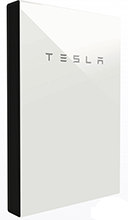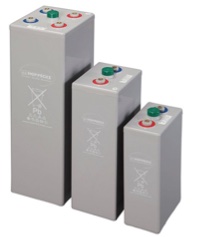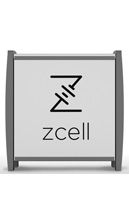Types of Solar Battery
Ten years ago, lead-acid batteries were the only real choice for those who wanted a solar battery. Since then, there has been a revolution in energy storage, and lithium batteries are now the only real practical option for on-grid home batteries.
But it wasn’t a sure thing that lithium would end up on top. It had some competition on the way from other energy storage technologies. These included flow and sodium nickel chloride batteries.
Below is a summary of these four battery types, plus links to further information on each.
 1) Lithium-ion
1) Lithium-ion
These days if you get a solar home battery, unless you really go out of your way to get something different, it will be lithium. It’s now the only practical option for on-grid home energy storage. While lithium batteries aren’t perfect, they reached their dominant market position mainly by beating the competition on cost and reliability.
While new competitors may appear in the future, lithium looks set to remain the only real choice for at least the next several years.
Read on and learn more about lithium-ion batteries or read reviews of Lithium-ion manufacturers.
2) Lead-acid
Despite lithium home storage being around for less than a decade, lead-acid batteries now seem like old-fashioned technology. But since they were invented in 1859, I guess they are.
Lead-acid batteries are big and bulky and can require lots of maintenance. While their upfront cost may not look too bad, they must be replaced far more often than other battery types. This leads to a high average cost per kWh of stored energy, making them unsuitable for use as an on-grid home battery.
On the plus side, they’re dependable and have been used by off-grid households for decades. While they are gradually disappearing, some are sticking with them because they’re a known quantity.
Read on and learn more about lead acid batteries
 3) Flow Batteries
3) Flow Batteries
A flow battery uses a liquid electrolyte. Their name comes from the fact that a pump makes this fluid flow through the battery.
The first and only residential flow battery to appear on the Australian market was the ZCell. This was designed by the Australian company Redflow and manufactured overseas. One advantage this battery had was fire safety, as its bromide electrolyte was also a fire suppressant.
While it was an innovative battery, it wasn’t a success and is no longer available for residential use. Redflow has no current plans to release another flow battery for home use. Because of this, flow batteries are unlikely to be a future option for home energy storage.
Read on and learn more about flow batteries
4) Sodium-ion
Sodium-ion batteries, or just sodium batteries for short, are a new technology with the potential to replace lithium batteries in home storage. Unlike other sodium based batteries, they don’t need high internal operating temperatures. Instead, they are similar to lithium-ion batteries, except cheaper sodium takes the place of lithium. Their drawback is this makes them heavier, but this isn’t a serious problem for home storage. The world’s largest battery manufacturer, the Chinese company CATL, is currently producing them for EVs and the Swedish Northvolt company has developed them for stationary storage.
No sodium home batteries are currently on the market and it may be years before they’re available. It also remains to be seen if they’ll beat lithium batteries on overall cost.

 3) Flow Batteries
3) Flow Batteries